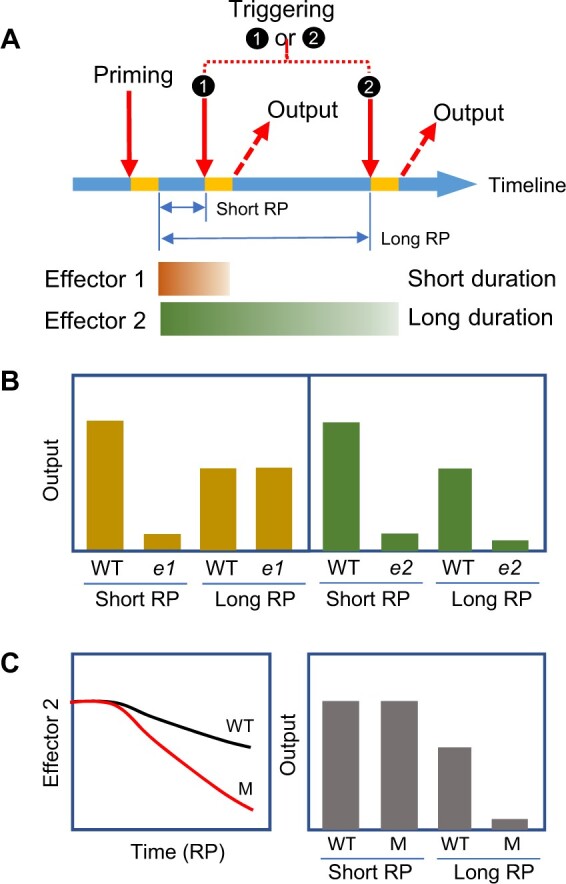Figure 2.

Assessment of plant abiotic stress memory using genetic approaches, and proposed criteria for short- and long-duration effectors. A, An experimental setup for priming and triggering to phenotype mutants of memory-related components. The features on the timeline are the same as in Figure 1A, except that triggering treatment is applied at either timepoint 1 or 2 by introducing a short (usually less than a few hours) or long (a few days) recovery period (RP), respectively, between priming and triggering. Priming induces the production of effectors that persist for different amounts of time (different durations). Effector 1 has a short duration, and Effector 2 has a long duration (represented by brown and green bars, respectively). B, Outputs of wild type (WT) and mutants unable to produce Effector 1 (e1) or Effector 2 (e2) after priming and triggering with a short or long RP. The output triggered after a short RP is compromised in both e1 and e2 but is compromised after a long RP only in e2. The output in the WT is lower after a long RP vs. a short one, corroborating the decay of effectors over time. C, Long-duration effectors (such as Effector 2) decay more rapidly in a maintenance mutant (M) than in WT during the RP (left panel). The mutant shows compromised output after a long RP but not a short RP (right panel), suggesting that the primed state does not persist for as long a time in the mutant as in the WT.
